Rhode Island is the smallest state in the United States. It covers only 1,221 square miles (3,162 square kilometers) and is a little more than half the size of Delaware, the second smallest state. In spite of its size, Rhode Island is an important industrial state. It ranks high among the states in the production of jewelry. Rhode Island’s official nickname is The Ocean State. But because of its size, the state has traditionally been called Little Rhody. Providence is the capital and largest city of the state.
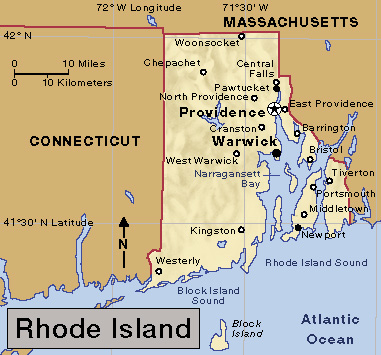
Rhode Island lies on beautiful Narragansett Bay, an arm of the Atlantic Ocean. The bay makes the state a leading vacationland. Hundreds of thousands of tourists come to Rhode Island each summer to enjoy boating, fishing, and other water sports.
Narragansett Bay almost cuts Rhode Island in two. The bay extends 28 miles (45 kilometers) inland from southern Rhode Island. The state has 36 islands, most of which are in the bay. Aquidneck, the largest island, was officially named Rhode Island in 1644. Towns on the mainland were called Providence Plantations. As a result, Rhode Island’s official name became State of Rhode Island and Providence Plantations. Thus, the smallest state had the longest official name. In 2020, however, Rhode Island voters approved a constitutional amendment to remove and Providence Plantations from the state’s name.
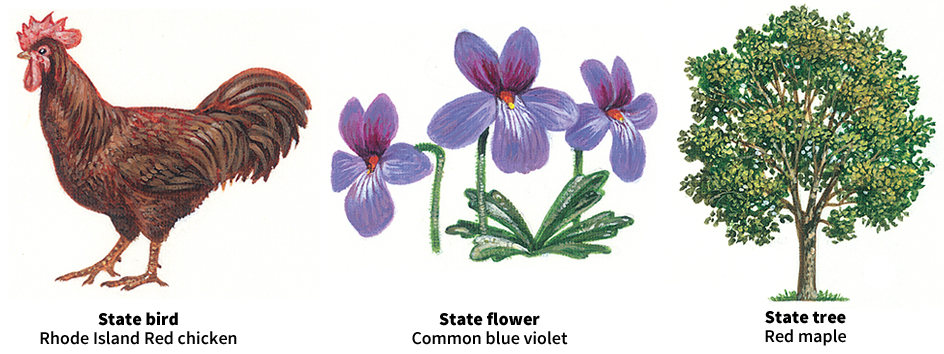
About a sixth of Rhode Island’s people live in the city of Providence. The Providence-Warwick metropolitan area extends into Massachusetts. All of Rhode Island’s people live in this metropolitan area.
Roger Williams, a minister who founded Providence in 1636, worked for religious freedom. He made the settlement a haven for refugees from religious persecution. Under his leadership, Rhode Islanders gained fame for their love of personal liberty.
Rhode Islanders organized the Continental Navy when the American Revolution broke out in 1775. Esek Hopkins served as the first commander in chief. Today, Rhode Island is the site of Naval Station Newport, which includes the Naval Undersea Warfare Center and the Naval War College, the Navy’s highest educational institution.

Rhode Island played an important role in the industrial development of the United States. Samuel Slater, an English machinist who settled in Rhode Island, helped Rhode Island merchant Moses Brown establish the American textile industry. In the late 1700’s, Slater built the country’s first cotton spinning machines driven by water power. Also in the late 1700’s, Nehemiah Dodge of Providence discovered how to cover base metals with silver and gold. He and his brother Seril started the jewelry industry in America. Rhode Islanders were also prominent in boatbuilding, shipping, and other industries.
People
Population.
The 2020 United States census reported that Rhode Island had 1,097,379 people. The state’s population had increased about 4 percent from the 2010 census figure, 1,052,567. According to the 2020 census, Rhode Island ranks 43rd in population among the 50 states.
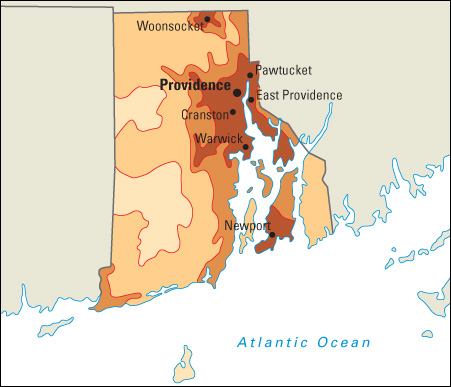
Rhode Island has eight cities. The state’s other communities are called towns. The cities, in order of size, are Providence, Cranston, Warwick, Pawtucket, East Providence, Woonsocket, Newport, and Central Falls.
About a sixth of Rhode Islanders live in Providence. All of the state’s people live in the Providence-Warwick metropolitan area (see Metropolitan area).
Most of the people in Rhode Island were born in the United States. A number of Rhode Islanders who were born in other countries came from Portugal.
Schools.
In colonial times, many Rhode Island ministers established schools to teach boys. Girls and very young boys attended dame schools, which were taught by women. In 1640, the people of Newport founded a free school to educate poor children. Rhode Island’s first statewide law establishing public schools was passed in 1800, but it was repealed in 1803. In 1828, Rhode Island’s legislature adopted the state’s first permanent school law. The Barnard Law of 1845, named for the state’s first commissioner of education, established the basis for the current public education system. In 1893, the city of Providence established the nation’s first special education programs based in public schools.
A commissioner of education and a Board of Education direct Rhode Island’s public elementary, secondary, and post-secondary education system. The governor appoints the board members to three-year terms. The Board of Education appoints the commissioner. Committees and superintendents head the local school districts. Rhode Island children are required to attend school from age 6 to 18.
Libraries.
Thomas Bray, an English minister, founded Rhode Island’s first library in Newport in 1700. The Redwood Library and Athenaeum was established in Newport in 1747. It is the oldest library in Rhode Island. Today, Rhode Island has public libraries throughout the state and many university and college libraries and special libraries. The Providence Public Library has branches throughout the city. The library’s collections include the Rhode Island Collection about the state and its people and the Nicholson Whaling Collection, one of the largest collections of materials about whaling in the United States.
The libraries of Brown University have many special collections. The John Hay Library of the university houses the McLellan Lincoln Collection of writings by and about Abraham Lincoln. The John Hay Library also includes the famous Harris Collection of American Poetry and Plays. 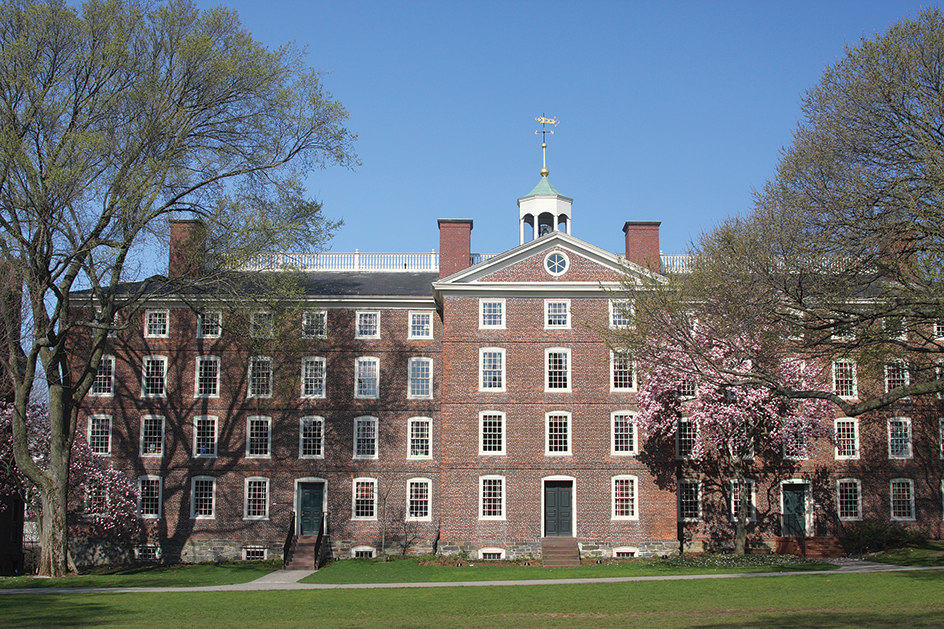
The Rhode Island State Library in Providence includes a special law collection that may be used by government officials and the public. Other special libraries in Rhode Island include those of the Newport Historical Society and the Rhode Island Historical Society in Providence.
The Office of Library and Information Services administers both state and federal funds for libraries in Rhode Island. The office also administers the Library of Rhode Island network.
Museums.
The Museum of Art at the Rhode Island School of Design in Providence has tens of thousands of works of art. The Museum of Natural History and Planetarium at Roger Williams Park, also in Providence, has science displays and exhibits of preserved animals and plants. The South County Museum in Narragansett displays tools used by American colonists. Other museums in the state include the Haffenreffer Museum of Anthropology of Brown University in Providence, the Museum of Primitive Art and Culture in Peace Dale, the Newport Art Museum, the Providence Children’s Museum, and the Museum of Work and Culture in Woonsocket.
Visitor’s guide
Thousands of vacationers visit the coastal resorts of Rhode Island each year. The resorts in the state offer swimming, boating, fishing, and beautiful scenery. Rhode Island’s leading resort centers include Block Island, Narragansett, Newport, and Watch Hill. In addition, tourists can visit the many historic sites, colonial buildings, and old churches in Rhode Island. Many of Rhode Island’s most popular annual events include boat races, fishing contests, and tennis tournaments. The annual Newport Classical is held in July. This event features internationally known classical artists performing in Newport mansion settings.
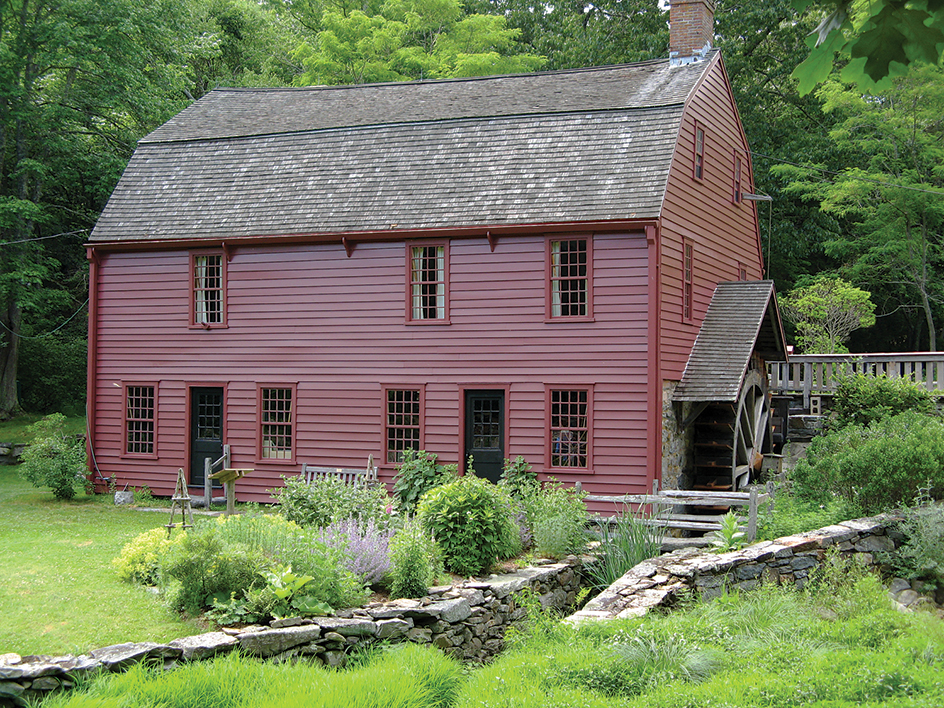
Land and climate
Land regions.
Rhode Island has two main land regions. These regions are, from east to west, (1) the Coastal Lowlands, and (2) the Eastern New England Upland.
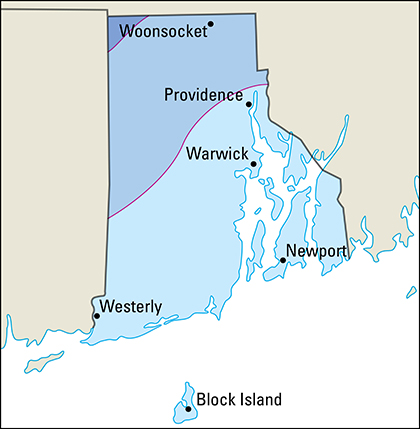
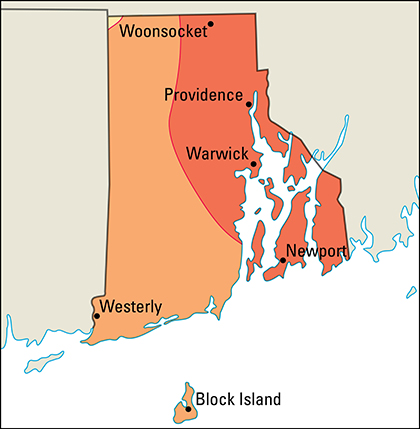
The Coastal Lowlands
cover more than half the Rhode Island mainland, the islands in Narragansett Bay, and the land east of the bay. The Coastal Lowlands are part of a larger land region of the same name that covers the entire New England coast.
Many sandy beaches and plains line the shores of Rhode Island’s lowlands. The shore west of Point Judith has sandy beaches, lagoons, and salt ponds. Rocky cliffs are found on the islands and the shore along the bay. Inland, the land rises to form higher elevations. East of Narragansett Bay, the slopes are low, round, and have few trees. West of the bay, the slopes are rugged and forested.
The Eastern New England Upland
covers the northwestern third of Rhode Island. The entire Eastern New England Upland extends from Maine to Connecticut. The portion in Rhode Island is often called the Western Rocky Upland. It has sloping hills and a higher elevation than the Coastal Lowlands. The land of the Western Rocky Upland rises from about 200 feet (60 meters) above sea level in the east to over 800 feet (240 meters) in the northwest.
Lakes, reservoirs, and ponds nestle among the region’s many hills. These hills include 812-foot (247-meter) Jerimoth Hill, the state’s highest point. The state has no mountains.
Islands.
Rhode Island includes 36 islands. They range in size from Aquidneck Island (officially named Rhode Island) with an area of 45 square miles (117 square kilometers), to Despair, a clump of rocks in Narragansett Bay. Block Island (officially New Shoreham) covers about 11 square miles (28 square kilometers). It lies in the Atlantic, about 10 miles (16 kilometers) south of the Rhode Island mainland. Bridges and ferry service connect the largest islands and the mainland.
Coastline.
Rhode Island has a 40-mile (64 kilometer) general coastline. If the tidal shoreline of the state’s bays and islands were included, the coastline would measure 384 miles (618 kilometers). The largest bay, Narragansett Bay, extends 28 miles (45 kilometers) inland. The many arms of Narragansett Bay include Greenwich and Mount Hope bays.
Rivers and lakes.
Three of Rhode Island’s chief rivers—Providence, Sakonnet, and Seekonk—are really saltwater arms of Narragansett Bay. Several freshwater rivers flow into the bay. These include the Pawtuxet, Pettaquamscutt, Potowomut, and Woonasquatucket. One river, the Blackstone, becomes the Pawtucket and then the Seekonk before flowing into the bay. The Pawcatuck River flows through southwestern Rhode Island and forms part of the Rhode Island-Connecticut border. Other important rivers include the Chepachet, Ponaganset, and Wood.
Most of the state’s inland rivers are small but swift. Many of the rivers have waterfalls. Water was once the major source of power for Rhode Island’s mills and factories.
Many lakes, ponds, and reservoirs dot the Rhode Island countryside. Scituate Reservoir, the largest inland body of water in the state, supplies water for Providence and nearby communities. Other large bodies of water in Rhode Island include Watchaug Pond and Worden Pond.
Plant and animal life.
Forests cover about three-fifths of Rhode Island. The state’s trees include ashes, birches, black walnuts, cedars, elms, hickories, maples, oaks, pines, poplars, and willows. Pin and post oaks are found near the north shore of Wickford Harbor. Paper birches, also called canoe birches, thrive in the northern part of the state.
Asters and cattails bloom in the marshlands of Charlestown and South Kingstown. Scarlet pimpernels grow on the cliffs of Newport. Red deer grass, white daisies, and wild carrots are found in meadows. Dogwoods, mountain laurels, rhododendrons, trilliums, and violets grow in the woodlands. A variety of freshwater and saltwater seaweeds grow in the waters of Rhode Island.
Wild animals in Rhode Island include beavers, coyotes, deer, foxes, minks, muskrats, opossums, otters, rabbits, raccoons, and squirrels. Barred owls, blue jays, catbirds, flickers, robins, ruffed grouse, and screech-owls live in the woodlands. Gulls, loons, ospreys, terns, and other shore birds make their homes along the coast. Game birds found in Rhode Island include partridges, pheasants, quails, wild ducks, and woodcocks.
Freshwater fish in the state’s waters include bass, eels, perch, pickerel, and trout. Saltwater fish include bluefish, butterfish, flounder, mackerel, menhaden, sea bass, striped bass, swordfish, and tuna.
Climate.
Warming winds from Narragansett Bay help give Rhode Island a mild climate. January temperatures average 29 °F (–2 °C), and July temperatures average 72 °F (22 °C). The state’s highest temperature, 104 °F (40 °C), was recorded at Providence on Aug. 2, 1975. The lowest temperature, –28 °F (–33 °C), was recorded at Wood River Junction on Jan. 11, 1942. 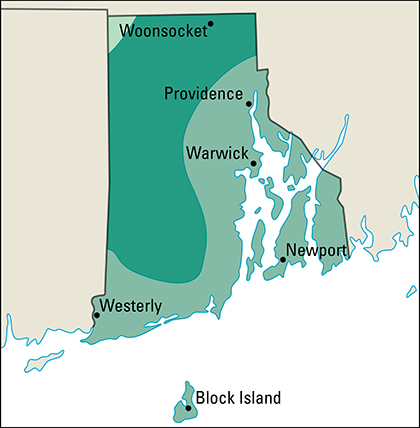
Yearly precipitation in Rhode Island averages about 48 inches (122 centimeters). Block Island averages about 20 inches (51 centimeters) of snow a year. The rest of the state averages about 34 inches (86 centimeters) of snow a year. The state has a growing season of about 200 days. Hurricanes and their accompanying storm surges, produced when winds drive ocean waters ashore, lash the Rhode Island coast and the shores of Narragansett Bay. The most destructive hurricanes occurred in 1815, 1938, 1944, and 1954.
Economy
Service industries, which include such wide-ranging activities as real estate, health care, and trade, employ most of Rhode Island’s work force. Manufacturing is also an important economic activity in the state.
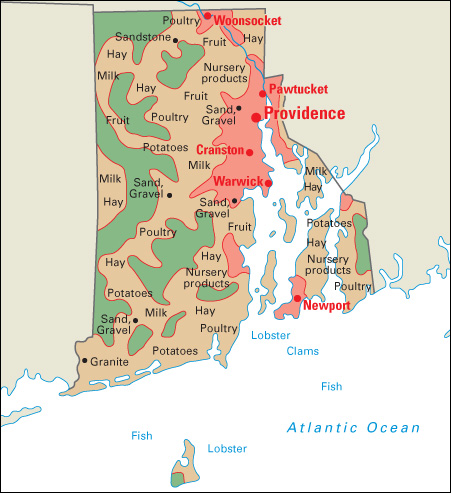
Natural resources.
Rhode Island has only a few large mineral deposits and other natural resources.
Soil.
Rhode Island’s richest soil is found along Narragansett Bay. Miami stony loam covers the bay’s basin and tableland. This firm brown soil holds moisture for an entire growing season. Glocester stony loam is the state’s least fertile soil. This light brown sand covers much of western and northern Rhode Island.
Minerals.
Westerly granite is Rhode Island’s best-known mineral. Its hardness and fine grain make it an excellent building material. Deposits of this granite lie mainly in southwestern Rhode Island, near the town of Westerly. The Coastal Lowlands have large sand and gravel deposits. Other mined products found in Rhode Island include limestone and traprock.
Service industries
account for most of both Rhode Island’s employment and its gross domestic product—the total value of all goods and services produced in the state in a year. Finance, insurance, and real estate is the state’s leading service industry group. Providence is one of New England’s leading financial centers. Some of the nation’s largest banking and insurance companies have major operations in Rhode Island.
Providence, the state capital, and Cranston are the centers of government activities. Hotels, restaurants, and retail trade establishments are primarily in the Providence area. Hotels and restaurants receive a large share of the billions of dollars spent by tourists each year. Several U.S. Navy facilities lie along Narragansett Bay.
Manufacturing.
The Providence area is the leading manufacturing center in Rhode Island. Pharmaceuticals (medicinal drugs) and other chemical products are manufactured in Providence. The Providence area ranks among the nation’s leading centers of the jewelry and silverware industries. The production of both costume jewelry and fine jewelry is important in Rhode Island.
Fabricated metal products are manufactured in the mainland part of the state. Architectural and structural metals and machine shop products are among the leading fabricated metal products made in Rhode Island. The state also manufactures medical equipment and primary metals.
Agriculture
Farmland covers less than 10 percent of the state’s land area. Greenhouse and nursery products are Rhode Island’s leading source of agricultural income. Sales of sod, ornamental trees and shrubs, and other nursery products earn over half of the state’s agricultural income.
Milk is another important source of agricultural income in Rhode Island. Dairy cows are primarily found in Newport and Washington counties. Hay, which is grown throughout the state, is the leading field crop. Potatoes and sweet corn are the state’s leading vegetables. Apples are the leading fruit.
Fishing industry.
Rhode Island’s annual fish catch includes a variety of fish and shellfish. Lobster and squid are among its leading catches. The state is a leading producer of flounder, scallops, and squid.
Mining
accounts for less than one-half of 1 percent of Rhode Island’s gross domestic product. Sand and gravel, as well as stone, are the most valuable mined products.
Electric power and utilities.
Plants that burn natural gas produce almost all of Rhode Island’s electric power. Most of the rest is provided by plants that use renewable sources.
Transportation.
Newport and Providence were international shipping centers from colonial days until the 1830’s. Their importance as shipping centers declined with the development of railroads. Rhode Island’s first railroad began operating between Providence and Boston in 1835. Today, the Providence and Worcester Railroad provides freight service in the state.
Rhode Island has an extensive system of roads and highways. The Rhode Island portion of Interstate Highway 95 extends between the Connecticut border, near Ashaway, and Pawtucket. Interstate 295 skirts Providence to the north and west. The biggest airport in Rhode Island is T. F. Green Airport in Warwick.
Communication.
Rhode Island’s first newspaper, the Rhode Island Gazette, began publication in 1732. Its publisher, James Franklin, was the brother of Benjamin Franklin. Today, the state’s leading daily newspapers include The Call of Woonsocket, The Newport Daily News, The Providence Journal, and The Times of Pawtucket.
Government
Constitution
of Rhode Island, the second in the state’s history, was adopted in 1986. It replaced the Constitution of 1842. It became effective on May 2, 1843. Until then, a royal English charter of 1663 served as the constitution. 
An amendment (change) to the state Constitution may be proposed by the Rhode Island legislature or by a constitutional convention. To become law, amendments proposed in the legislature need the approval of a majority of the legislators once before an election. The amendments are then submitted to the people in a regular election. A majority of those voting must approve the amendments. To call a constitutional convention, a majority vote by the legislators and voters is needed. Amendments that are proposed by a constitutional convention require the approval of a majority of the voters in a regular election.
Executive.
The governor of Rhode Island is elected to a four-year term and may serve no more than two consecutive terms. Rhode Island has no official residence for its governor. Rhode Island voters also elect the lieutenant governor, attorney general, secretary of state, and state treasurer to four-year terms.
The governor, with the Senate’s approval, appoints most other key executive officials. These executive officials include the directors of administration, business regulation, environmental management, health, human services, labor and training, and transportation.
Legislature
of Rhode Island is called the General Assembly. It consists of a 38-member Senate and a 75-member House of Representatives. Senators and representatives serve two-year terms. The legislature meets annually, beginning on the first Tuesday of January. Regular and special legislative sessions have no time limit. 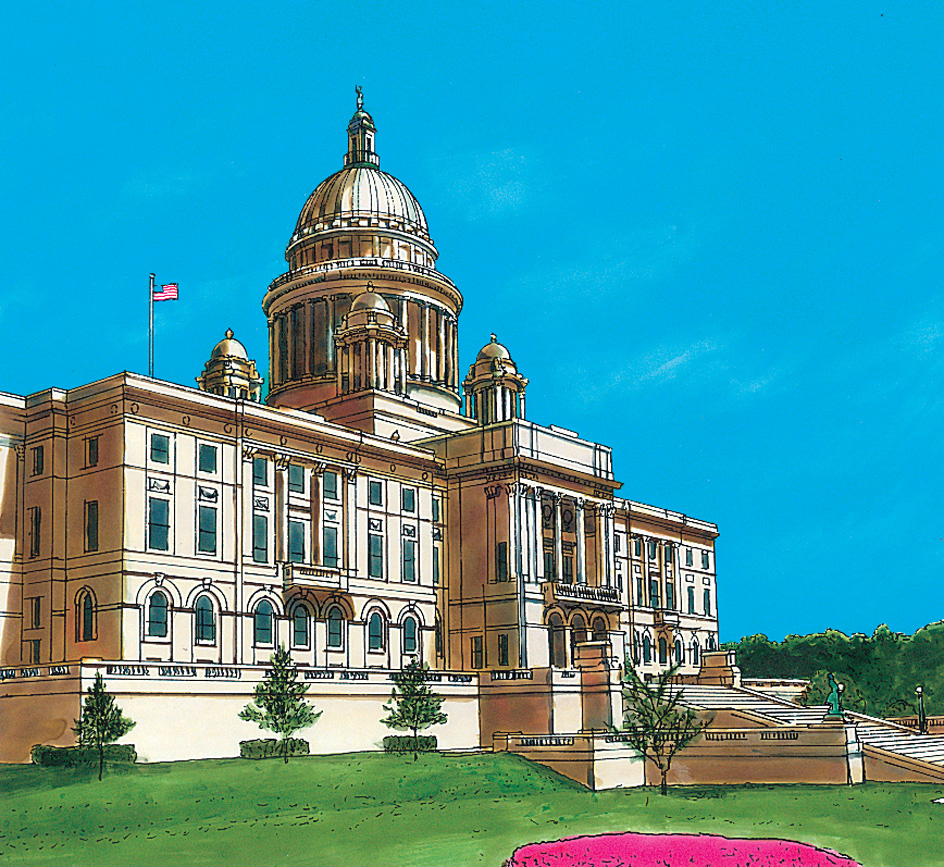
Courts.
The Supreme Court of Rhode Island has a chief justice and four associate justices. The governor, with the advice and consent of the House and Senate, appoints Supreme Court justices, including a chief justice, to life terms.
Other Rhode Island courts include a district court, a family court, a superior court, and a workers’ compensation court. The governor, with the consent of the Senate, appoints District, Family, Superior, and Workers’ Compensation court judges to life terms.
Local government.
Most of Rhode Island’s cities and towns have home rule. That is, they can write and amend their charters without permission from the legislature. Rhode Island towns are similar to townships in other states. They are geographic districts that may include rural areas and several unincorporated villages under one government. Rhode Island and Connecticut are the only states that have no county governments. The two states do have geographical areas called counties, however.
Most large Rhode Island cities have the mayor-council form of government. These cities include Central Falls, Cranston, East Providence, Pawtucket, Providence, Warwick, and Woonsocket. Newport uses the council-manager form of government. Most of Rhode Island’s towns have a council-manager form of government.
Revenue.
Taxation provides about 40 percent of the state government’s general revenue (income). Other major sources of revenue are federal grants, municipal bonds, and charges for government services.
The largest source of tax revenue in Rhode Island is a personal income tax. A general sales tax is the second largest source of tax revenue. Other important sources of tax revenue include taxes on corporate income, insurance premiums, motor vehicle licenses, public utilities, and tobacco products. The state also receives revenue from a lottery.
Politics.
Rhode Island became a Republican state shortly before the American Civil War (1861-1865). Most voters in Rhode Island favored the antislavery and pro-Northern policies of the Republican Party. The growth of cities, usually favorable to the Democratic Party, helped Rhode Island become a two-party state during the 1920’s.
Rhode Island voters supported the Republican presidential candidate in every election but one from 1856 to 1928. The exception was the election of 1912, when they voted for Woodrow Wilson, a Democrat. Since 1928, the state has voted Democratic in most presidential elections.
In state and congressional elections, the people of Rhode Island usually voted for Republicans from the 1860’s to the 1920’s. Since the 1930’s, however, they have generally favored Democratic candidates for the state legislature, the governorship, and the U.S. Congress.
History
Early days.
Archaeological evidence suggests that the first people came to what is now the Rhode Island area about 10,000 years ago. When European settlers began arriving in the 1630’s, Algonquian-speaking tribes were living in the area. They included the powerful Narragansett, who occupied about two-thirds of what is now Rhode Island, and the Niantic, Nipmuck, Pequot, and Wampanoag.
Exploration.
Giovanni da Verrazzano, an Italian navigator working for France, sailed along the Rhode Island coast in 1524 and was the first known explorer to enter Narragansett Bay. Dutch navigator Adriaen Block sailed into the bay in 1614.
Historians are not sure why the state came to be called Rhode Island, but the following facts are known. Verrazzano remarked that an island off Rhode Island’s southern coast reminded him of Rhodes, an island in the Mediterranean Sea. Block named Aquidneck Island, in Narragansett Bay, Roodt Eylandt (Red Island) because of the red earth along its shore. Roger Williams, who founded Providence, called Aquidneck Island Rode Island, which he said meant Isle of Roses. European settlers later officially changed the name of Aquidneck Island to Rhode Island.
Settlement.
In 1636, Roger Williams established Rhode Island’s first permanent white settlement, which he called Providence Plantations, at the head of Narragansett Bay. Williams, a Puritan minister, had fled the Massachusetts Bay Colony after being sentenced to banishment for promoting certain ideas. He said, for example, that the civil authorities did not have the power to enforce obedience to religious beliefs. In Providence, the government was restricted to civil matters, and the people had complete religious freedom. See Williams, Roger. 
In 1638, Anne Hutchinson, William Coddington, John Clarke, and others expelled from Massachusetts founded the settlement of Pocasset at the north end of Aquidneck Island. Coddington, Clarke, and others left Pocasset in disagreement over political and religious issues and founded Newport at the south end of the island in 1639. Hutchinson and her followers remained at Pocasset and renamed it Portsmouth.
Samuel Gorton and his followers left Pocasset and went to Providence but then founded a fourth town, Shawomet, in 1642. Gorton later secured a grant from England for the town, which he renamed Warwick.
In 1643, the Massachusetts Bay, Plymouth, Connecticut, and New Haven colonies formed a military alliance, excluding the Narragansett Bay towns. Their leaders regarded Rhode Island as a wicked, disorderly place and called it Rogue’s Island. Williams proposed that the four Rhode Island settlements unite for protection. In 1644, he obtained a charter from England for the Province of Providence Plantations in Narragansett in New England. But it was not until 1647 that Portsmouth and Newport agreed to the union. The charter was voided when the monarchy was restored in England in 1660. King Charles II granted a new charter in 1663. It was called the Charter of Rhode Island and Providence Plantations. It remained the law of Rhode Island until 1843.
King Philip’s War.
Roger Williams respected the rights of the Indigenous (native) Americans and worked to live in peace with them. But the growing conflict between settlers and Indigenous peoples in the Plymouth and Massachusetts Bay colonies developed into a war that engulfed New England, including most of Rhode Island. Fighting began in June 1675 between Plymouth and the Wampanoag, who were led by Metacom (also known as King Philip). In December, colonial soldiers from the surrounding colonies entered Rhode Island and attacked the Narragansett in the Great Swamp Fight, near present-day West Kingston. The Wampanoag retaliated by destroying the white settlements on the west side of Narragansett Bay, including Providence. In 1676, the Indigenous groups in southern New England were defeated and Metacom himself was killed near Mount Hope (now Bristol).
The growth of ocean trade.
Newport escaped the destruction of King Philip’s War, and its farmers and merchants led the way to a new economy for Rhode Island. The coastal regions and islands of Narragansett Bay had excellent farm and grazing land. Rhode Island began to produce a surplus of agricultural products that could be sold. A number of Quakers and Jews had been attracted to the colony because of its religious freedom. They developed trading networks through their widespread family and religious connections and helped the city to enter international trade. Newport ships began carrying products to other parts of the world. 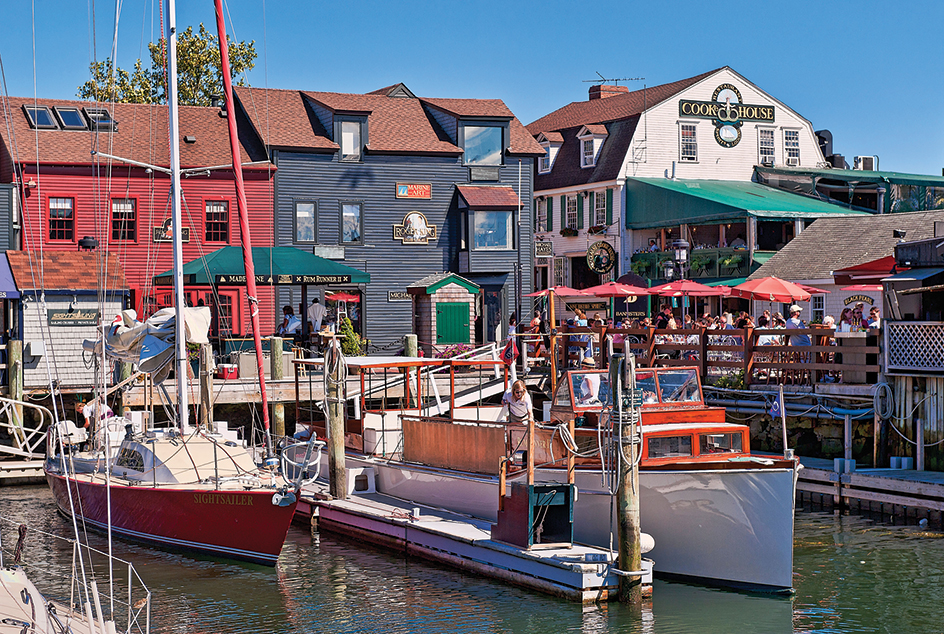
In the 1700’s, Rhode Islanders also entered the slave trade, bringing people who had been captured in Africa to the colonies. They remained the main American slave traders through the 1700’s. In the 1730’s, some Newport families developed large farms on the west side of the bay and used the labor of enslaved workers to raise crops and care for sheep, cattle, and horses. But Rhode Island banned the importation of enslaved Africans in 1774, enacted a law in 1784 that established a process for gradually ending slavery, and outlawed the trade in enslaved people in 1787.
The American Revolution.
In the 1760’s, Britain attempted to tighten control over its American colonies through new taxes and trade restrictions. Rhode Island’s many acts of rebellion included the burning of the British ship Liberty in Newport harbor in 1769 and the burning of the Gaspee near Warwick in 1772. When the American Revolution broke out in Massachusetts in 1775, hundreds of Rhode Island volunteers went to Massachusetts to fight. On July 18, 1776, the Rhode Island General Assembly ratified the colonies’ Declaration of Independence.
Stephen Hopkins and other Rhode Island men were the chief organizers of the Continental Navy. Esek Hopkins was the navy’s first commander in chief. Nathanael Greene, a general in the Continental Army, became recognized as a great military leader.
The British occupied Newport from December 1776 to October 1779. In August 1778, American soldiers attempted to drive out the British, but they were not successful and retreated. A group of formerly enslaved Black people in the First Rhode Island Regiment won praise for their role in protecting the American forces.
On July 9, 1778, Rhode Island was one of the first of the original 13 states to ratify the Articles of Confederation (the forerunner of the United States Constitution), but it was the last one to ratify the U.S. Constitution. Rhode Island opposed the Constitution because it took power from the states and gave the federal government the right to levy taxes and regulate commerce. The Constitution also prohibited the states from issuing their own money, something Rhode Island had done frequently. Finally, on May 29, 1790, delegates to Rhode Island’s constitutional convention accepted the Constitution by a vote of 34 to 32. 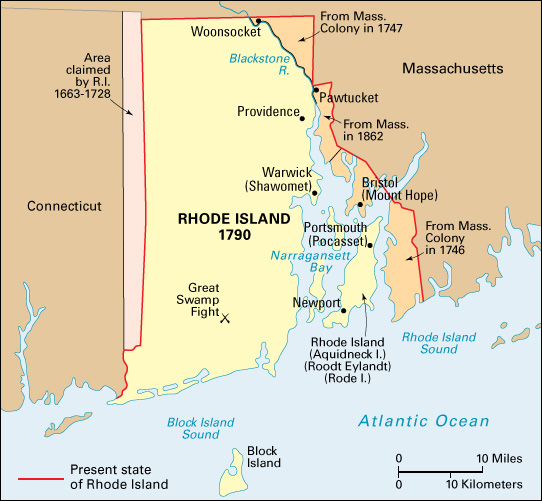
Industrial expansion.
After the American Revolution, the merchants and manufacturers of Providence played an important role in turning Rhode Island into a leading industrial state.
Moses Brown, who sought to develop a successful textile industry in the United States, hired Samuel Slater to reproduce machinery that had been developed in England. England had built the first water-powered textile mill. Its textile workers were forbidden to leave the country to keep the process secret. Slater, a mill manager, had disguised himself as a farmer and escaped to the United States. He built machines to produce cotton thread and, in 1790, began operating a water-powered cotton- spinning mill in Pawtucket. By 1815, Rhode Island had 100 mills in 21 towns. From the 1820’s to the 1920’s, the production of cotton and woolen textiles was the state’s leading industry. 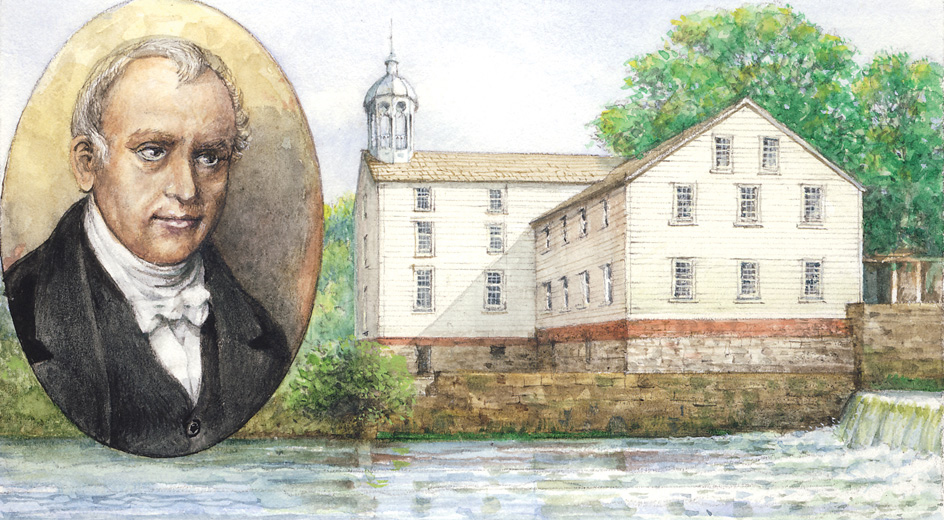
In 1794, Nehemiah Dodge of Providence discovered how to cover base metals with silver and gold. He and his brother Seril began a jewelry-making industry. Rhode Island became a major jewelry-making center.
The Dorr Rebellion.
In the 1830’s, about half of the men in Rhode Island were not eligible to vote because only property owners had voting rights. The state was still governed under its 1663 charter, which apportioned (divided) seats in the General Assembly and gave the legislature the power to set voting requirements. As more and more people moved to the industrial cities, fewer men were able to meet the property requirement. The legislature was dominated by declining rural towns, and the heavily populated urban areas had little representation. The legislature refused to change voting requirements or to consider reapportionment. Therefore, a reform movement began to grow.
Thomas Dorr, a lawyer, led the reformers in drafting a new constitution and forming a new government. In 1842, when the state government refused to step aside, the Dorrites attempted to overthrow it by force. They failed, but their action led to the adoption of a new state constitution, which took effect in 1843. The Constitution gave voting rights to native-born adult Rhode Island men who paid taxes of $1 a year or served in the militia. Also, urban areas gained more seats in the legislature. Foreign-born citizens still had to own property to vote.
The Civil War.
During the American Civil War (1861-1865), more than 24,000 Rhode Islanders served in the Union Army and Navy. The state’s most famous officer was Major General Ambrose E. Burnside, who commanded the Army of the Potomac for a brief period. Burnside later served as Rhode Island’s governor and as a U.S. senator. Rhode Island was heavily involved in supplying Union war needs. The state made cannons, rifles, uniforms, boots, blankets, tents, and other equipment.
The Gilded Age.
After the Civil War, American industry boomed. Some people amassed large fortunes. American author Mark Twain, referring to the culture of the newly rich, called this period the Gilded Age.
In Rhode Island, the textile industry and other industries expanded. By the 1890’s, Providence had the world’s largest textile company. It also boasted of its Five Industrial Wonders of the World—the world’s largest factories for making files, screws, silverware, steam engines, and tools. Pawtucket was the home of the largest thread company, and Woonsocket had the largest rubber footwear factory. Many Canadian and European immigrants poured in to work in the mills and factories. The population almost doubled between 1870 and 1900.
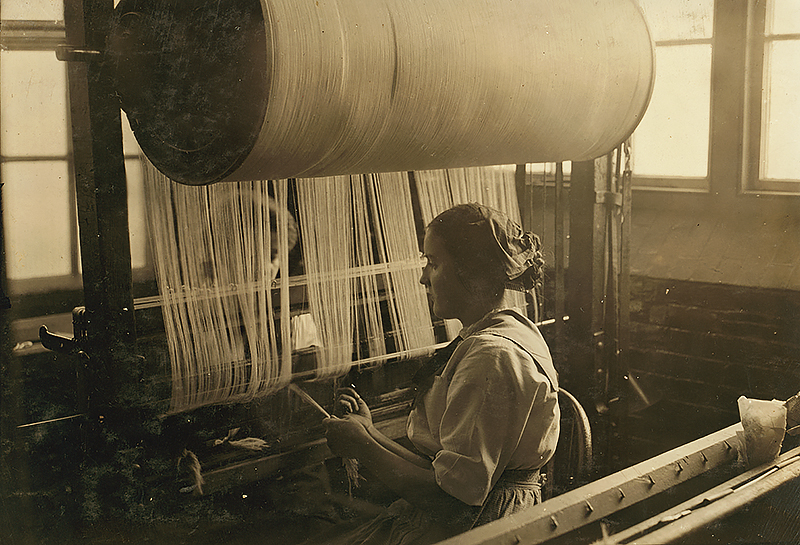
Newport became a favorite summer resort for many wealthy families. They lived in huge mansions and enjoyed such sports as golf, polo, tennis, and yachting. The resorts, parks, and beaches dotting the shores of Narragansett Bay attracted people of all economic levels. 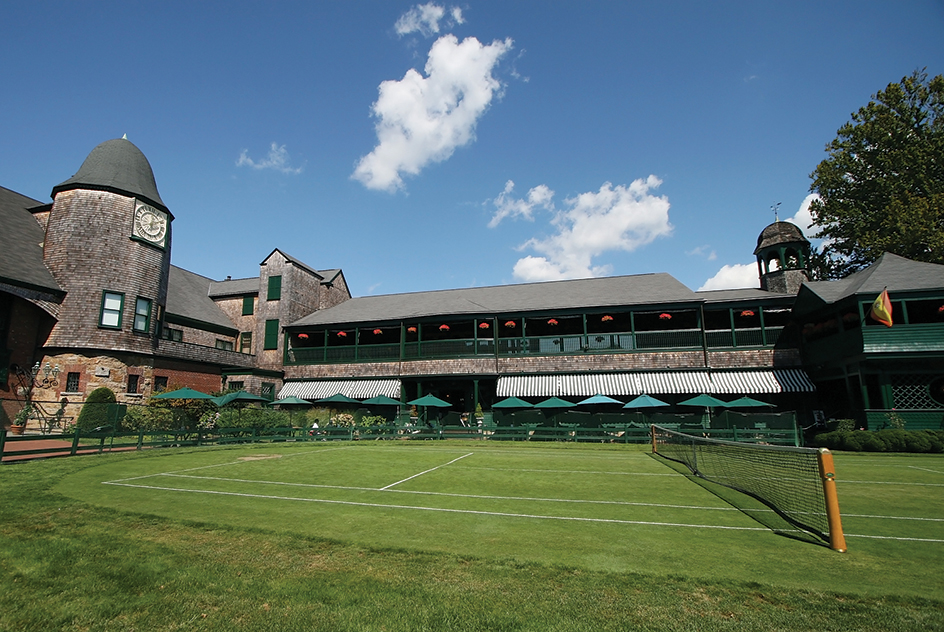
The state’s strong naval tradition continued. In 1883, Newport became the home of the Newport Naval Training Station, where naval recruits were trained until 1952. The Naval War College, the Navy’s highest educational institution, opened there in 1884.
A changing economy.
At the beginning of the 1900’s, Rhode Island had more than 1,500 factories, making products from locomotives to ribbons. In 1910, about half the state’s workers were involved in manufacturing. During World War I (1914-1918), Rhode Island shipyards built combat and cargo ships, and the state’s factories produced war materials. But by the 1920’s, manufacturing was declining. Many textile plants were moving to the South, where labor costs were lower and the mills newer. The state began to experience an economic depression, which was worsened by the Great Depression of the 1930’s.
In 1938, Rhode Island suffered one of its worst natural disasters. A hurricane and tidal wave struck the state, killing 317 people and causing $100 million in property damage.
World War II (1939-1945) brought a temporary revival of manufacturing. But after the war, defense contracts ended, and a number of Rhode Island companies closed. The decline of manufacturing continued through the rest of the 1900’s.
Tourism became increasingly important in the 1960’s. New roads and highways opened much of the state to tourists. In 1969, the Rhode Island section of Interstate Highway 95 opened, and the Newport Bridge was completed across Narragansett Bay between Jamestown and Newport. The bridge was named for Senator Claiborne Pell in 1992, but many residents continued to refer to it by its former name.
The Cruiser-Destroyer Force of the U.S. Atlantic Fleet, which had been headquartered at Newport in 1952, moved out of Rhode Island in 1973. The Naval Undersea Warfare Center remains in the state. The fleet’s departure plunged Newport and other cities into economic crisis. The state’s population declined during the 1970’s as many people left the state.
Rhode Island shared in the national defense build-up in the 1980’s. But U.S. defense spending decreased as the Cold War drew to a close in the late 1980’s and early 1990’s. Many defense-related industries in Rhode Island declined. In the 1990’s, the state’s jewelry industry faced much competition from international companies, and it suffered a major decline. The textile industry had left the state, except for the making of specialty textiles, lace, and narrow braid.
By the end of the 1900’s, the state’s economy had shifted from manufacturing to service industries. Tourism was an important contributor to the economy, and such services as government and health care were leading employers. The state’s universities had become centers of research and development. The oceanographic research program of the University of Rhode Island was recognized as one of the finest in the nation.
Political reform.
The Republican Party dominated Rhode Island’s government from the Civil War until the 1930’s. The party maintained control despite the growing popularity of the Democratic Party in the heavily populated urban areas. Rural Republican towns controlled the state Senate. Under the 1842 state Constitution, each city and town had one vote in the Senate. In 1925, for example, Providence, with 267,918 people, and West Greenwich, with 407 people, each had one vote.
Pressure for change mounted in the 1920’s. In 1935, during the Great Depression, the Democratic Party gained control of the state through a government reorganization called the Bloodless Revolution. The party’s control increased in the 1960’s, when a reapportionment on the basis of population took place. In the 1970’s, a Rhode Island Republican won a seat in the U.S. Congress for the first time in 40 years. But the Democratic Party has continued to control the General Assembly.
A number of political scandals in the 1980’s and 1990’s led to calls for reform. State officeholders guilty of being involved in wrongdoing included two Supreme Court chief justices, an auditor general, several city mayors, and a former governor. In 1991, the organization that insured state-chartered credit unions collapsed. Such factors as mismanagement, lack of governmental oversight, and corruption led to the financial disaster, which resulted in the closing of 45 banks and credit unions. The state restored the lost funds to depositors at a large cost to Rhode Island taxpayers.
Demands from citizens groups helped bring about the enactment of stricter ethical standards and other changes, including the reduction in size of the General Assembly, an end to a corrupt legislative pension system, and term limits for the governor and other officials. In the early 2000’s, a campaign to bring about the separation of powers among the three branches of government gathered strength. Observers said that the state’s legislative branch had greater power than the executive and judicial branches, leading to conflicts of interest and corruption among its members.
The early 2000’s.
In a nonbinding referendum in 2002, 76 percent of the state’s voters approved a proposal for separation of powers. The vote led the General Assembly to consider the matter. A separation-of-powers amendment passed in both houses in 2003, and voters approved it in 2004.
In January 2003, the reduction in the size of the General Assembly, which had been approved by voters in 1994, went into effect. The Senate was reduced from 50 to 38 members. The House of Representatives went from 100 to 75 members.
In March and April 2010, heavy rains caused the Pawtuxet River and other rivers in the state to reach record high levels. Flooding damaged many homes and businesses throughout Rhode Island.
Rhode Island’s economy struggled during a national economic downturn that began in 2008. The state’s unemployment rate ranked among the highest of all states during the early 2010’s.
In 2020, voters approved a constitutional amendment changing the state’s official name—State of Rhode Island and Providence Plantations—because of the associations of the word plantation with slavery. The state’s name became, simply, State of Rhode Island.
